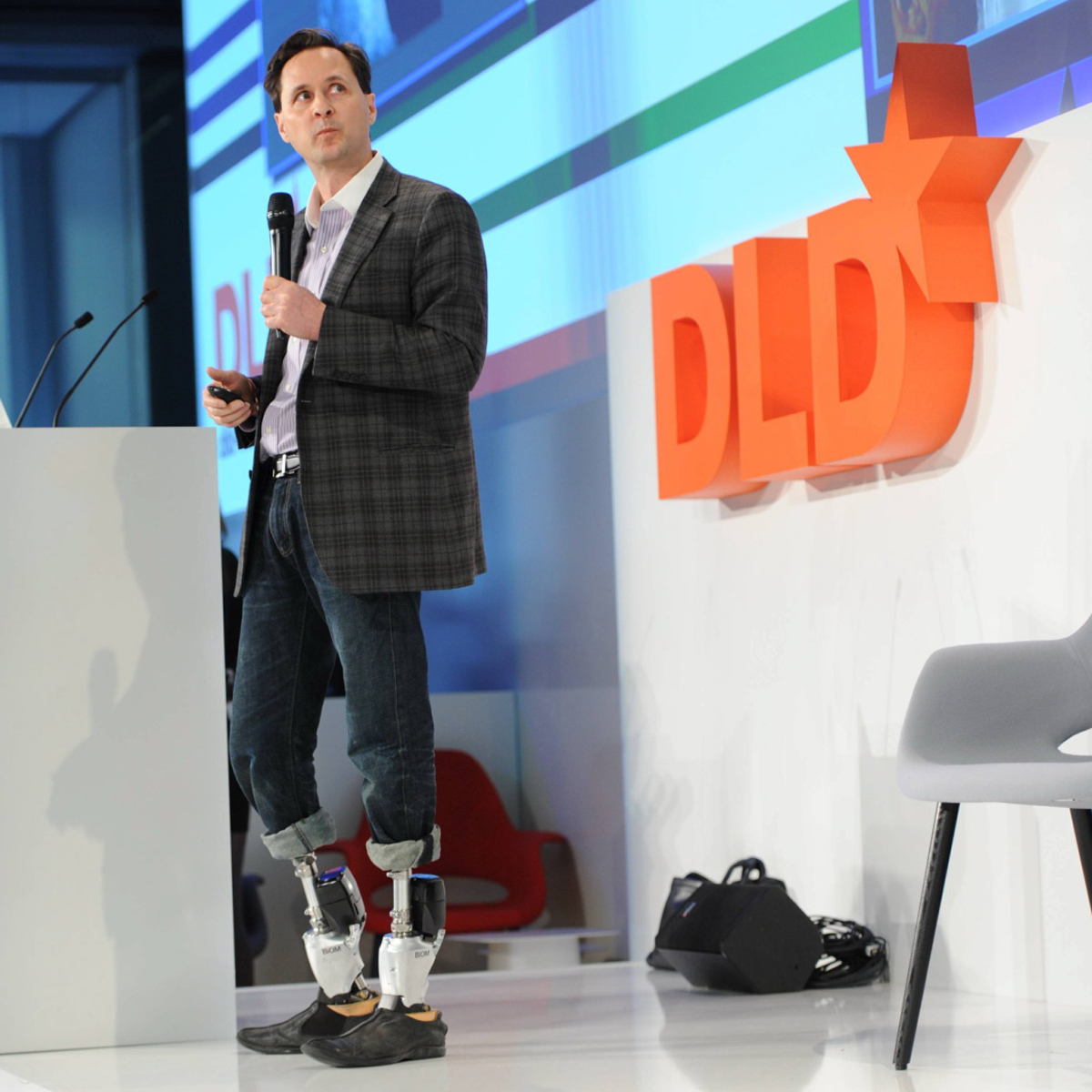Hugh Herr: Bionic Pioneer

DLD13 Conference by Hubert Burda Media on Flickr
How much of your research is informed by your own personal experience?
All of it. On a very basic level, I am acutely aware as a user of prostheses of the importance of good design. If you put out bad technology, wow, people suffer a great deal. But if you put out good design, it’s really life-changing for people.
I’ve read that you have different types of prostheses designed for different types of rock climbing.
Yes, I do. First of all, my height is adjustable. I can be about 5 feet or as tall as I’d like. I have one set of prosthetic feet that enable me to stand on a small rock edge the width of a coin. I have another that wedges into small rock fissures even where the human foot cannot penetrate. I have another that’s more compliant for slopes, frictional surfaces. I have another that is a spiked foot that penetrates vertical ice walls.
What are you working on right now that you’re most excited about?
My laboratory develops extreme interfaces between the body and synthetic devices. One of those interfaces is how we communicate electrically between the human body and devices. This is the area of neural implants: small electronic packages that are implanted in the body that signal between human and device. We seek a bidirectional interface to the peripheral nervous system that allows us to link to—or communicate with—nerves and muscles and use those electrical communications for better control of prostheses and other devices.
So, in layman’s terms, you’re talking about controlling robotic body parts with your brain.
Yes, the patient will have direct neural control over the prostheses, and, furthermore, the patient will feel, to some degree, mechanical interactions between the world and the prostheses, whether they’re reaching out and grabbing a cup of coffee or walking across a sandy beach. I’m hopeful that we can launch such an interface in a broad clinical sense a decade from now.
Are we getting to where we’re going to start seeing even people who haven’t lost limbs using this type of technology?
Yes. For example, in the future, when a person goes running, they’ll have exoskeletal elements maybe as part of their clothing that stiffen to protect their biological joints when they run on pavement. So absolutely.


